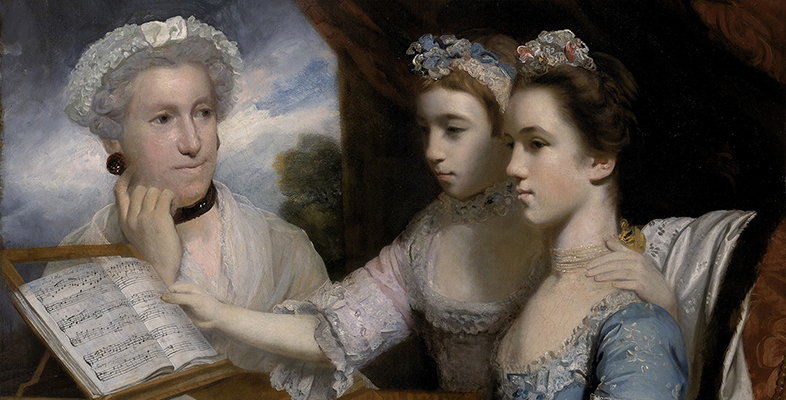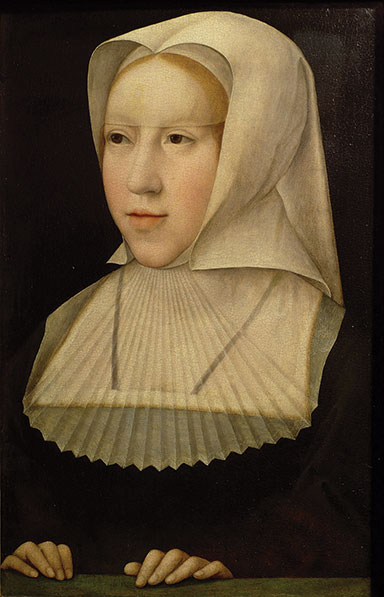2.1 The music manuscripts of the Alamire workshop
You are now going to study one of the most significant music copyists of the early sixteenth century – Pierre (or Petrus) Alamire (c.1470–1536). Alamire served the courts of Margaret of Austria, Regent of the Habsburg Netherlands from 1506 to 1530 (see Figure 2); her nephew Charles (the future Holy Roman Emperor); and Margaret’s successor as regent, Mary, Queen of Hungary (Kellman, 2014). Margaret’s territory in the Netherlands had been ruled by her brother Philip; she became regent there following his death in 1506, acting as guardian for her aforementioned nephew, Charles, until he attained his majority (Blockmans, 1999, pp. 8–9).
The Netherlands had come under Habsburg control through the marriage in 1477 of Margaret’s father Maximilian I (King of the Romans and then Holy Roman Emperor, 1486–1519) to Mary, daughter of Charles the Bold, Duke of Burgundy. The Duchy of Burgundy had comprised parts of modern-day France and the Netherlands, and during the fifteenth century the court of the Burgundian dukes had emerged as a centre of cultural splendour and musical patronage, emulated across Europe. On her appointment as Regent of the Netherlands, Margaret of Austria chose Mechelen (French: Malines) as her residence and began to reestablish the cultural and musical patronage of the Burgundian court, as is reflected in the music manuscripts that survive from her regency (Picker, 1965, pp. 11–12, 21, 27–9).
Pierre Alamire had moved to Mechelen from Antwerp by 1516 and was one of several copyists of polyphonic music serving the Netherlands courts during the early sixteenth century. Around forty-seven choirbooks and partbooks, as well as some fourteen manuscript fragments, that were partly or wholly copied, or supervised, by Alamire have survived from this period. Among those produced in this way were beautifully illustrated manuscripts for the chapels of Margaret, Charles, Maximilian and Mary of Hungary. Others were presented as gifts to significant music patrons, such as King Henry VIII of England, Elector Frederick the Wise of Saxony and Pope Leo X. While in the service of the Habsburgs, Alamire continued to accept other independent commissions, such as for the nearby confraternities of Our Lady in Antwerp and ’s-Hertogenbosch as well as for other significant individuals (Kellman, 2014). You will now look at two of the manuscripts produced in Alamire’s workshop to see if their appearances and contents can reveal anything about their patron, their recipient or their intended use.

